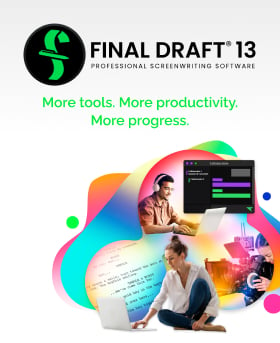How Sundance’s ‘Rabbit Trap’ Screenplay Took Shape
January 31, 2025
For his feature debut and Sundance premiere Rabbit Trap, writer/director Bryn Chainey took what might seem like an unconventional path to develop the period horror story.
After drafting two unproduced features with the goal of trying to fit industry expectations, Chainey decided to follow his creative instincts wherever they led. The result is a genre-defying work that weaves together folk horror elements with experimental music and striking visuals, emerging from a deeply personal creative process.
In Rabbit Trap, Daphne (Rosy McEwen) and Darcy (Dev Patel) move to the 1970s Welsh countryside to work on Daphne’s experimental album. Her music is full of droning, buzzing, theremin and spoken vocals. Darcy spends his days recording audio on the moors, until one day he picks up a strange vibration. Nightmares keep him up at night. Then, one day, they see a puckish child (Jade Croot) watching their cottage—and he’s soon enmeshed in their lives in a way that threatens all of them.
Instead of traditional outlining, Chainey said he started with his fascinations—images, sounds, and ideas that captured his imagination. Through journaling and self-interrogation, he allowed sometimes seemingly disconnected elements to find their own connections.
Landscapes morphed into scenes, musical patterns suggested character moments, and even the growth patterns of mushrooms influenced the film’s visual language. It’s a unique process and a way to connect thematic and visual threads. What results is an atmospheric story and one of the strongest folk horror tales I’ve seen in years.
Final Draft chatted with the filmmaker just before his Sundance premiere at a very chilly Eccles.
Chainey opened up about his distinctive approach to screenwriting, his methods for solving creative problems, and why staying true to your artistic vision might be the most important lesson any filmmaker can learn.
His insights offer valuable guidance for creators looking to find their own path through the murky landscape of independent film.
Final Draft: So you’re blending a few different things in the script. You’ve got folk horror. You’ve got experimental music elements. How do you approach putting that all on the page?
Bryn Chainey: For me, I do a lot of journaling. When I write, I get fixated on certain things at different times. I get a certain kind of music or a landscape or an image or a color, and I just journal. I’m like, “Okay, Bryn”—I do it as questions. Why is this interesting to you? Is it because this is, is it somehow scary to you? Are you intimidated by this? And I just ask myself questions.
And so I end up with just pages and pages of just ranting, rambling, kind of just asking myself what’s going on. And along the way, rhymes happen in a way.
I say, “Oh, what I’m fascinated by in the music is actually connected to why I’m interested in mushrooms and the way they grow,” and along the way I find the connection points and they just coalesce.

Bryn Chainey, director of 'Rabbit Trap', an official selection of the 2025 Sundance Film Festival. Courtesy of Sundance Institute. | photo by Adi Bulboaca
Final Draft: So in that, are you finding the form of the story as well? Is that your outlining process?
Chainey: Yeah, the outlining changes a lot as I’m interrogating why I’m interested in certain things. Scenes pop up, because the way I express an understanding of something, it just comes out in a scene.
I’m not really a hyper visual thinker. I don’t really have full phantasia. So instead little narrative scenarios just jump out.
I read about mushrooms and the way that a certain kind mushroom, it will billow its spores out, and as I’m picturing it or reading about it, suddenly I’ll connect that to the way that I’ll suddenly picture Daphne, the main character, smoking a cigarette, and I can see her vapor billowing out across the room. And then that would take me to her speaker, which looks like a mushroom.
And these little things become scenes, and I write them down and then I follow them. And along the way it starts to very slowly make sense.
Final Draft: I love the idea of that process. I think it’s beautiful.
Chainey: It’s really intuitive.
Final Draft: So if you’re finding that a scene doesn’t work, how do you approach the problem-solving?
Chainey: Some scenes, you don’t know they don’t work until you’re on set. And then if the scenes don’t work on the page—it really varies.
It’s usually to do with if a scene isn’t working, it’s not always the problem of the scene. It’s a problem of a scene 10 scenes ago.
And there were times in the later stages, problem-solving act two sequences actually meant going and planting better seeds in the beginning. And it was about zooming out and viewing everything holistically and checking, do we have enough momentum? Do we have mystery moving through things? Is there consistency? It goes all over the place, really, but there’s so much of it’s just zooming out.
Final Draft: Yeah, that’s so important too. It’s the plant, the payoff. Do you have advice for someone tackling their first feature as a writer?
Chainey: This was the third feature I wrote. I wrote two others that I didn’t make. So the first two features I wrote didn’t come together, and I think I was writing what I thought I should write. Not completely, but I was trying to write a good film. And this time I was like, “Fuck it, I’m going to write my own favorite movie.”
And I just put all the things I love and all the things that I need to see. That was my whole goal, make my own favorite movie.
So that’d be my advice. It’s just write the movie you wish existed, and don’t compromise on that. If you want certain kind of relationships, like fucking write it. Are you going to shoot a movie in remote landscapes? Then find a story that works there and write your bliss—or write what scares you.
Written by: Jo Light
A recovering Hollywood script reader, Jo spent several years in story development, analyzing screenplays for the likes of Relativity Media and ICM Partners while chasing her own creative dreams. These days, she juggles writing for industry leaders Final Draft, ScreenCraft, and No Film School, teaching budding writers at the college level, and crafting her own screenplays—all while trying not to critique every movie she watches.



